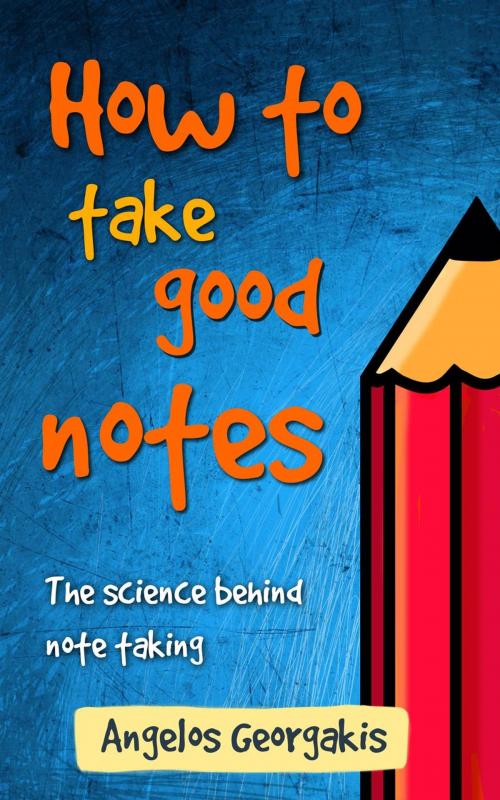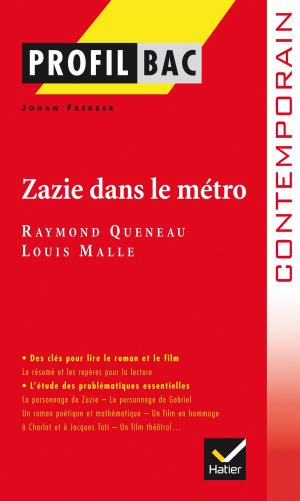How to Take Good Notes
Nonfiction, Reference & Language, Education & Teaching, Study Skills, Study Aids, Book Notes| Author: | Angelos Georgakis | ISBN: | 9781519997371 |
| Publisher: | Angelos Georgakis | Publication: | November 17, 2015 |
| Imprint: | Language: | English |
| Author: | Angelos Georgakis |
| ISBN: | 9781519997371 |
| Publisher: | Angelos Georgakis |
| Publication: | November 17, 2015 |
| Imprint: | |
| Language: | English |
“Why would I need a book on how to take notes? Notes are just notes; they’re not a big deal”. “At the end of the day, everyone has their own way to take notes.” “Anyway, no one taught me how to take notes in school or in college.” “It comes naturally.” “I feel like I always knew how to take notes! It’s just notes. It’s not rocket science!”
“Notes are just notes.” FALSE. Scientists have found that note taking can be as mentally demanding as playing chess can be for an expert. While you take notes, you listen carefully to the lecturer, you process the new material, you organize it in your working memory, and you finally write down what you think is most important. All this happens while someone is talking at an average speed of three words per second and someone is writing down at an average speed of one-third of a word per second. It doesn’t sound easy now, does it?
Notes are an important tool for learning. We don’t take notes just to record a few facts so we can review them later. Learning happens as we take notes. Taking notes the right way leads to good study practices, better performance on exams, and long-term retention of information.
“It comes naturally.” FALSE. Note taking is not obvious or intuitive. Research has shown that students fail to capture 40% of the main points in a typical lecture. First-year students capture only 11%. In some studies, even the best note takers seem to record less than 75% of the important information. People think they take good notes until they’re told they don’t. Few of us have consciously thought about how we take notes (let alone how to improve the quality of them). We often reproduce the lecturer’s phrases verbatim. We don’t save time by systematic use of abbreviations. We fail to become a “good psychologist” of our lecturer. We fail to pick up his enthusiasm. We fail to interpret the tone of his voice. We fail to read his body language. And the result is that we fail to take good notes.
“Anyway, no one taught me how to take notes in school or in college.” TRUE. Educators believe that students are able to assess the quality of their notes and follow good practices. However, studies have shown the exact opposite. The fact that there isn’t a course in college dedicated to the art of taking notes (or learning in general) makes students believe that this is a natural skill that they can perfect with practice over the course of their studies.
“At the end of the day, everyone has their own way to take notes.” TRUE. In this book, you may be surprised to learn that I don’t make any references to different types of note-taking systems like those that other books do. The reason is that it’s the practices behind the note taking that matter most. For example, you should not copy the lecturer’s phrases word for word, but generate the main points in your own words. And you should leave space on your notes for adding comments and testing yourself later. I encourage students to use the Cornell note-taking system because it utilizes most of the principles of effective note taking. No matter which note-taking system you decide to follow, the cognitive effort you will have to expend is equally high.
Note taking may not be rocket science, but it’s definitely science—cognitive science. And cognitive science has produced a lot of useful insights that we can use now to take better notes. This book presents these insights in simple words, so you can make the most of your notes and use them to study effectively.
Notes can do so many good things for you. They hold all your learning efforts. Treat them well. Look after them.
“Why would I need a book on how to take notes? Notes are just notes; they’re not a big deal”. “At the end of the day, everyone has their own way to take notes.” “Anyway, no one taught me how to take notes in school or in college.” “It comes naturally.” “I feel like I always knew how to take notes! It’s just notes. It’s not rocket science!”
“Notes are just notes.” FALSE. Scientists have found that note taking can be as mentally demanding as playing chess can be for an expert. While you take notes, you listen carefully to the lecturer, you process the new material, you organize it in your working memory, and you finally write down what you think is most important. All this happens while someone is talking at an average speed of three words per second and someone is writing down at an average speed of one-third of a word per second. It doesn’t sound easy now, does it?
Notes are an important tool for learning. We don’t take notes just to record a few facts so we can review them later. Learning happens as we take notes. Taking notes the right way leads to good study practices, better performance on exams, and long-term retention of information.
“It comes naturally.” FALSE. Note taking is not obvious or intuitive. Research has shown that students fail to capture 40% of the main points in a typical lecture. First-year students capture only 11%. In some studies, even the best note takers seem to record less than 75% of the important information. People think they take good notes until they’re told they don’t. Few of us have consciously thought about how we take notes (let alone how to improve the quality of them). We often reproduce the lecturer’s phrases verbatim. We don’t save time by systematic use of abbreviations. We fail to become a “good psychologist” of our lecturer. We fail to pick up his enthusiasm. We fail to interpret the tone of his voice. We fail to read his body language. And the result is that we fail to take good notes.
“Anyway, no one taught me how to take notes in school or in college.” TRUE. Educators believe that students are able to assess the quality of their notes and follow good practices. However, studies have shown the exact opposite. The fact that there isn’t a course in college dedicated to the art of taking notes (or learning in general) makes students believe that this is a natural skill that they can perfect with practice over the course of their studies.
“At the end of the day, everyone has their own way to take notes.” TRUE. In this book, you may be surprised to learn that I don’t make any references to different types of note-taking systems like those that other books do. The reason is that it’s the practices behind the note taking that matter most. For example, you should not copy the lecturer’s phrases word for word, but generate the main points in your own words. And you should leave space on your notes for adding comments and testing yourself later. I encourage students to use the Cornell note-taking system because it utilizes most of the principles of effective note taking. No matter which note-taking system you decide to follow, the cognitive effort you will have to expend is equally high.
Note taking may not be rocket science, but it’s definitely science—cognitive science. And cognitive science has produced a lot of useful insights that we can use now to take better notes. This book presents these insights in simple words, so you can make the most of your notes and use them to study effectively.
Notes can do so many good things for you. They hold all your learning efforts. Treat them well. Look after them.















